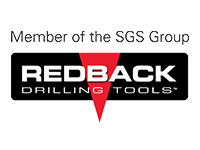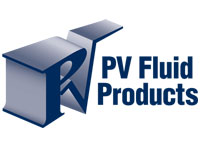AADE Houston FMG Meeting
When: Nov 18, 2025 @ 1:00 PM
Want to SPONSOR the FMG Meetings? The cost is $600 for the calendar year. Click Here to Sponsor!
REGISTER HERE
DATE: TUESDAY, Nov 18, 2025 - 1:00 PM - 3:00 PM
Note NEW Start Time! Registration/Check-in begins at 12:45 PM.
Note NEW Start Time! Registration/Check-in begins at 12:45 PM.
LOCATION: Norris Conference Center-CityCentre (Elm Room), 816 Town & Country Blvd. Suite 210, Houston, TX 77024. Corner intersection of IH-10 West and Beltway 8. For additional driving directions & a map, check their website at: https://norriscenters.com/houston-citycentre-map/.
COST: Member: Free to attend / Non-member: $15
Non-members have the option to join as a member or renew your membership before registering, then the meeting cost will be free as well as all subsequent DTC meetings for 2025.
Program Topic: “New Chemistries”
SPEAKERS
1. Thomas Pisklak Ph.D., R&D Advisor (Cementing), Halliburton
Presenting – “Reduced Portland, High-Performance Cement Systems”
Global cement manufacturing accounts for ~8% of the total worldwide CO2E (carbon dioxide equivalent) emissions. Comparatively if cement manufacturing were a country, it would be the eighth largest country for CO2 emissions globally. Even though the amount of cement used in the oilfield is only a small fraction of the total cement manufactured, there is a strong interest in reducing the carbon footprint of oilfield operations. The overall carbon footprint is not only derived from cement manufacture, but is also affected by emission sources such as equipment, facilities, raw material loading and transport, wellsite operations, and others. However, even when considering these other factors, Portland cement manufacture is still, by far, the largest contributor to CO2E in cementing oilfield operations. Therefore, reduction of the amount of Portland cement is an effective and efficient method of reducing effective CO2E contributions from cementing operations and the overall well construction process. In an effort to reduce the amount of Portland cement being used, high-performance blends with enhanced mechanical properties employing supplemental cementitious materials have been developed and deployed. This has been accomplished through a proprietary cement tailoring process based on physicochemical knowledge and advanced design techniques. In this paper, examples of this process and resulting cement properties will be illustrated along with examples of Portland cement reductions of greater than 50% by mass
Thomas (TJ) Pisklak is a scientific advisor for Cementing Applied Sciences and Processes (CASP) at Halliburton Technology Partners and is based in Houston, TX. He holds a doctorate in inorganic chemistry, is considered a subject matter expert on oilfield cement chemistry and pozzolan technology. For the last 14 years his work has focused on the development low-Portland cements for oilwell cementing and other applications. He has developed and commercialized multiple products and has been granted over 100 patents related to oilfield applications of cement technology.
2. Vic Keasler, Ph.D., Sustainability Manager, SLB
Presenting – “Reimagining Reservoirs: Unlocking Low-Cost, Low-Carbon Hydrogen from the Underground”
Hydrogen is hailed as a cornerstone of the clean energy future—but making it both low-carbon and cost-effective remains a major challenge. Green hydrogen technologies have yet to hit the price point needed for widespread adoption. But what if the answer lies beneath our feet?
This workshop explores a groundbreaking approach: repurposing end-of-life, waterflooded oil and gas reservoirs to produce hydrogen with significantly reduced carbon intensity and cost. Attendees will gain insight into the enabling technology and learn about a novel chemical solution that could be used to mitigate the risk of hydrogen embrittlement in carbon steel pipelines—offering a far more economical alternative to full pipeline replacement. Join us to discover how legacy infrastructure could become a launchpad for the hydrogen economy.
Vic Keasler has a B.S. degree in Microbiology from Texas A&M University and a Ph.D. in Molecular Virology & Microbiology from Baylor College of Medicine.
He has worked for SLB in the area of Production Chemistry and Sustainability for the past 17+ years. During that time, Vic has co-authored over 40 papers at conferences and in peer reviewed journals focused on microbial detection and control in oilfield systems. In addition, Vic has 20 granted patents for the development of new antimicrobials to reduce the risk of microbiologically influenced corrosion, biotic H2S production, and/or biofouling. Vic currently serves as the Sustainability Manager at SLB for the chemical technologies business.
3. Chris Harano, CEO of Advanced BioCatalytics (ABC)
Presenting – “Unconventional Oil Recovery”
Mr. Harano will share their experience producing stimulation surfactants as used in unconventional frac completions. This includes formulation methodology, lab testing and simulation methods and case studies. ABC uses biotechnology applied to industrial chemistry, surfactants to enhance performance, reduce costs and produce environmentally friendly products. Key market segments include Energy, Oil and Gas both upstream and remediation, Water Treatment, Waste and Industrial processing, Agriculture, and Industrial and Home Cleaning as well as Personal care.
Chris Harano is currently CEO of Advanced BioCatalytics (“ABC”). Mr. Harano has been with ABC since 2016 and prior managed other technology growth companies in industries such as aviation chemicals, specialty manufacturing, and information technology. Mr. Harano started his career with PWC progressing from auditing into business turnarounds and finally M&A consulting. Prior to Mr. Harano’s arrival, circa 1998, their first customer Kikkoman, utilized their surfactant for water treatment which coincided with their first patent application. This technology coincided with the UC Irvine experiments with proteins as surfactants. In 2007 the National Science Foundation certified their surfactant technology for water treatment and in 2008 the International Marine Organization approved their surfactant technology. In 2011 the EPA approved their surfactants for the gulf oil spill, whereby BP becomes their first oil & gas customer. Today, BP Ventures is invested in ABC. As CEO he leads and advances new methods for producing industrial chemistry using fermentation methods and techniques. ABC’s products are used in a wide variety of industries including water treatment, agriculture, home, personal care, and the oil & gas industry.
Register Here.
Reservations are required!
Deadline for reservations is Noon, Monday, Nov 17.
Driving & Parking Instructions:
The Norris CityCentre facility is located at the corner of intersection of IH-10 West and Beltway 8. The location features plenty of complimentary parking.
IMPORTANT NOTE – For your convenience, we encourage you to park in the garage that is attached to the Norris Centers location (enter the parking garage from Beltway 8). Take the “up” ramp in the middle of the parking garage. You will see signs with the Norris name and logo directing you to the correct floors to park. Please note that a number of parking spaces are reserved for other tenants of the complex and have “reserved” signs identifying these spaces. There is plenty of parking, so please avoid parking in these reserved spots.
For additional driving directions & a map, check their website at: https://norriscenters.com/houston-citycentre-map/

Search AADE for PDF Files
© 2024 American Association of Drilling Engineers
Follow AADE:
This website uses cookies. By continuing to browse this website without changing your web-browser cookie settings, you are agreeing to our use of cookies. To learn more read our privacy policy.
Ok







